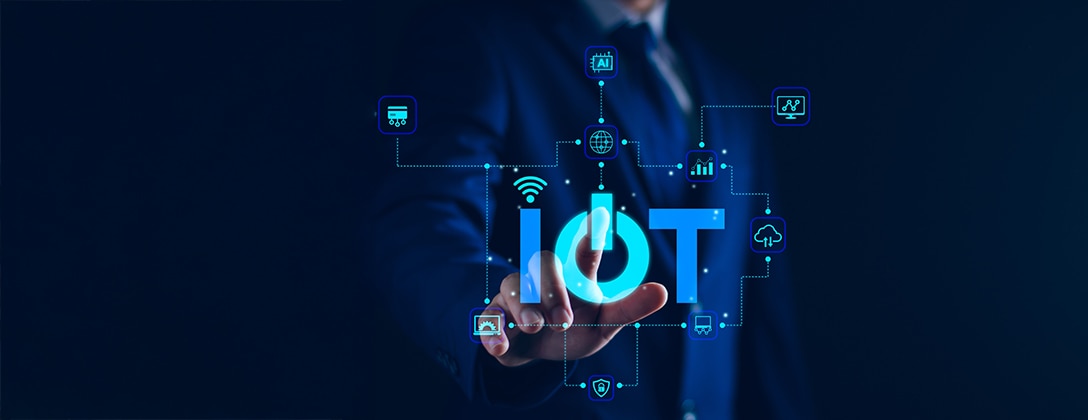Understanding IoT and Its Relevance
What is IoT?
The Internet of Things refers to the network of physical devices embedded with sensors, software, and other technologies that connect and exchange data with other devices and systems over the internet. In the context of lending, IoT can provide real-time data that lenders can use to make more informed decisions.
The Current Lending Landscape in India
India’s lending ecosystem has seen significant growth, fueled by traditional banks, NBFCs, and fintech startups. However, challenges such as high default rates, inadequate credit histories, and a lack of personalized services persist. Integrating IoT into this landscape can address these issues effectively.
How IoT is Transforming Lending in India
- Enhanced Risk Assessment
IoT devices can provide real-time data about a borrower’s behavior and asset condition. For instance, a lender could monitor the health and usage of a vehicle financed through an auto loan. This data allows lenders to evaluate risk more accurately and make informed lending decisions. - Improved Credit Scoring
Traditional credit scoring often relies on limited data, leaving many potential borrowers underserved. IoT can help create alternative credit scoring models by integrating data from various sources, such as utility payments, mobile usage, and spending habits. This approach can broaden access to credit for individuals with limited or no credit history. - Dynamic Interest Rates
With IoT data, lenders can implement dynamic pricing models that adjust interest rates based on real-time risk assessments. For example, if a borrower demonstrates responsible financial behavior, their interest rate could decrease over time. This not only rewards good behavior but also enhances borrower loyalty. - Personalized Loan Offerings
IoT can enable lenders to offer customized loan products based on a borrower’s unique circumstances and data insights. For instance, if a smart home device indicates a family’s growing energy consumption, a lender could suggest energy-efficient loan products. This level of personalization can improve customer satisfaction and engagement. - Streamlined Loan Management
IoT devices can facilitate automated loan management processes. For example, smart sensors in vehicles can help track loan repayment by automatically deducting payments based on usage or milestones. This reduces the chances of default and simplifies the repayment process for borrowers. - Streamlined Loan Management
IoT devices can facilitate automated loan management processes. For example, smart sensors in vehicles can help track loan repayment by automatically deducting payments based on usage or milestones. This reduces the chances of default and simplifies the repayment process for borrowers.
Challenges and Considerations
- Data Privacy and Security
The integration of IoT in lending raises significant concerns regarding data privacy and security. Lenders must ensure that they comply with regulations and implement robust cybersecurity measures to protect sensitive borrower information. - Infrastructure Limitations
While urban areas in India are increasingly adopting IoT technologies, rural regions still face infrastructure challenges. Bridging this digital divide is essential for ensuring that all segments of the population benefit from IoT-driven lending. - Regulatory Framework
The Indian regulatory landscape is still evolving in terms of how it addresses the use of IoT in lending. Clear guidelines are necessary to ensure responsible data use and protect consumers. - Customer Acceptance
While tech-savvy consumers may embrace IoT-based lending, others may be hesitant to share personal data. Lenders must invest in customer education and demonstrate the value of IoT solutions to encourage adoption.
Few latest instances of IoT in Lending
- Vehicle Financing with Telematics
Some auto lenders are using telematics devices to track the condition and usage of financed vehicles. Companies like Zebra Labs have developed solutions that allow lenders to monitor driving behavior in real-time. By analyzing data such as mileage, driving patterns, and maintenance needs, lenders can better assess risk and potentially offer more favorable loan terms based on responsible driving behavior. This approach not only helps mitigate risk but also encourages safer driving among borrowers. - Smart Home Financing
Lenders are starting to utilize data from smart home devices to inform mortgage decisions. For instance, LendingHome has been exploring the use of smart home technology to evaluate the value and condition of properties in real-time. Information such as energy usage, occupancy patterns, and even security alerts can provide lenders with deeper insights into the home’s status, helping them make more informed lending decisions. - Insurance and Lending Integration
Some companies are exploring the intersection of insurance and lending through IoT data. For example, Lemonade has combined renters and homeowners’ insurance with lending options. By using data from smart home devices, they can assess risk and offer loans at competitive rates. This integration helps create a more holistic view of a borrower’s financial situation and asset risk. - P2P Lending Platforms Using IoT Data
Peer-to-peer (P2P) lending platforms are beginning to incorporate IoT data to assess borrower reliability. For instance, platforms like Upstart are using machine learning algorithms that analyze alternative data, including IoT data, to provide a more accurate picture of a borrower’s creditworthiness. This approach allows for quicker and more personalized loan approvals.
The Future of IoT in Lending in India
The potential for IoT in India’s lending sector is immense. As technology continues to evolve, lenders will likely adopt more sophisticated IoT applications to enhance their services.
- Collaborations and Partnerships
Financial institutions may collaborate with tech companies to leverage IoT innovations. These partnerships can lead to the development of new products and services that cater to the changing needs of consumers. - Focus on Financial Inclusion
IoT can play a crucial role in promoting financial inclusion in India. By providing alternative data points for credit assessments, more individuals and small businesses can access loans, fostering entrepreneurship and economic growth. - Enhanced Customer Experience
As lenders harness IoT technologies, the customer experience will likely improve significantly. Faster approvals, personalized offerings, and seamless loan management will redefine how consumers interact with financial institutions.
Conclusion
The integration of the Internet of Things in India’s lending sector presents exciting opportunities for innovation and transformation. By leveraging real-time data, lenders can enhance risk assessment, broaden access to credit, and create personalized experiences for borrowers. While challenges remain, the potential for IoT to revolutionize lending practices in India is vast, paving the way for a more efficient, inclusive, and customer-centric financial ecosystem. As the country continues to embrace technological advancements, the future of lending is poised for remarkable change.












